Finding Five Shipwrecks in Riverhead, Long Island
What wreckage in your life might eventually serve a greater purpose?
It was time to get out of New York City.
With movement so limited this past year I’m basically jumping at any opportunity I get to travel, albeit on a budget. A friend has a house on the North Fork of Long Island. Would I like to come stay for a while?
“There’s a shipwreck on a nearby beach. Or shipwrecks? Either way, you could walk to ‘em.”
Memorial Day weekend was rainy and cold, which is weather I don’t mind when I’m near the ocean. Few things are more beautiful than a stormy sea, so long as you’re not out on it. The house was filled with people I barely knew. New friends. All staying under one roof. What a concept.
We grilled under umbrellas and headlamps, played board games and card games and breathed the same air. When the weather relented, we visited a charming local farm stand at Briermere Farms and bought fresh vegetables, peonies, and a cherry cream pie that tasted so delicious it seemed like some kind of forbidden treat in a children’s fairytale or Greek myth. As if eating a slice meant I could never return home, a deal I would have gladly made.
The next day the sun was finally shining. I woke early, put on light running shorts, a Hawaiian shirt, and a pair of black vans, and went out to find my wreck.
Reeves Beach is located at the end of Park Road in Riverhead, New York. A gazebo sits atop a bluff, from which a long, steep set of wooden stairs brings me down to the sandy shoreline. At the bottom of the stairs stands a life guard chair and swimming area that looks identical to a photo I found of the beach from the 1950s. There is also a ramp for vehicles. If you’re a member of the beach you can still drive your truck, jeep, or car if you’re reckless, out onto the sand.
Two men in an old rowboat are putting out the buoys and lines that mark the border of the swimming area for the season, or maybe they’re just re-anchoring them after they washed ashore during the recent bad weather.
I raise my hand in greeting and the men wave back.
Beyond the two men in their boat, the Long Island Sound stretches in both directions and the mainland lies in the deep horizon. I have always loved islands, and try my hardest to live on them whenever possible, a beloved feature of living in New York City.
To my left, on the horizon, jutting out of the water is a thin, black line. One of the wrecks. I turn toward it and begin to hike up the beach.
The early sun is still low in the sky, but the sand beneath my feet is already hot. I follow the ruts in the sand left by the trucks driven out onto the beach. Wildflowers dot the coastline like splattered paint.
I’ve come to Reeves at low tide, hoping to see as much of the shipwrecks as I can. The wide shore is covered in seashells left by the receding waves. Bright blues, indigos, and purples of periwinkles along with empty mussel shells mix in with the green seaweed and light gold sand.
As I make my way further up the beach, I come across two teenagers smoking an early morning joint. One of them cups it quickly as I walk by. I wave to let them know I’m just passing through, and they hesitantly wave back. I am struck, in that moment, by the idea of being seen for what I am: an adult.
The wreck comes more fully into view. It is hulking and magnificent, made of wood and iron and covered in sea moss. Out in the water, past the first shipwreck, sticking out of the sound, is a second shipwreck. As I come around a bend in the beach a third and fourth wreck come into view.
There are five wrecks in total. I had asked around at a local bar about them earlier in the week, and the stories were—fitting of a shipwreck—a bit haphazard. Some claim the ships were originally damaged in a winter storm, while others believe they were simply too old to be of any use. Either way, according to reporter Denise Civiletti who spoke with town historian Georgette Case in 2017, the ships were “run ashore by a sand and gravel company in the 1930s to form a harbor to protect barges transporting the sand and gravel.” Sadly, Case said, “The sand was found to be of poor quality and the operation was abandoned.”

[Editor’s Note: While researching the shipwrecks, I came across this stunning aerial photo of three of the wrecks. I’ve paid the $19.99 licensing fee so I can share said photo with you. Please consider a paid subscription to Walk It Off so that I can continue to pay for things like licensing fees and, you know, more cherry cream pies.]
According to Civiletti and Case, “the wrecks were first burned in September 1943. A second fire in 1947 burned the structures to the water line.”
I like that more isn’t known about the wrecks. What is a shipwreck without a bit of mystery?
By now I’d walked past the third wreck, buried in the shore, and was exploring the fourth, further up the beach. A metal propeller was sticking out of the water and I climbed into the wreckage to get a better look, careful not to cut myself on barnacles or step on the giant rusted nails protruding from the abandoned ship’s massive beams.
Looking off at the first wreck from the fourth, I decide to swim back to it instead of walk. I tie my Hawaiian shirt around my wrist and slip my phone into a ziplock bag that I’ve brought just for this occasion. I have a single can of Miller Light in my pocket and I keep it there, hoping the cold saltwater will cool it down (a trick I learned while working on an island in my teenage years where we had access to plenty of beer but zero refrigerators). I leave my Vans on, in case I have to set my feet down and there are nails or other debris on the ocean floor.
As I swim back I think about these five boats. Free on the water and doing what they were meant to do—then damaged by a storm or simply past their prime, repurposed for a failed business venture, and finally catching fire and burning down to their cores. Forgotten, cast away in the sand. But even then, finding another life as a place for teenagers to hang out at night, or people to explore during the day. Turning an already stunning beach into a place of adventure.
What wreckage in your life might eventually serve a greater purpose? What debris are you aware of that might one day rise above its station?
I climb out of the water and onto the first wreck. A gathering of cormorants are sunning themselves on the second wreck out in the water. They warily watch my ascent. I wave at them, but they do not wave back.
I find a cold pool within the wreckage and place my can of beer in it, giving it more time to chill. I take in the green bluffs above the shore, and the ship becoming more submerged by waves as the tide comes in. The sun feels good and warm on my wet skin. I untie my shirt from my wrist and put it back on as I walk down the beach. Ahead of me I see a shape that looks like a treasure chest, but as I come upon it I can see that it’s simply a stump, meant for sitting around a fire pit that someone has dug into the sand.
I walk further down the beach. The teens are gone. In the distance I can see the two men loading their old rowboat into the back of a truck. I sit down by the water, my now cold beer in the sand in front of me, and listen to the ocean gently meet the shore.






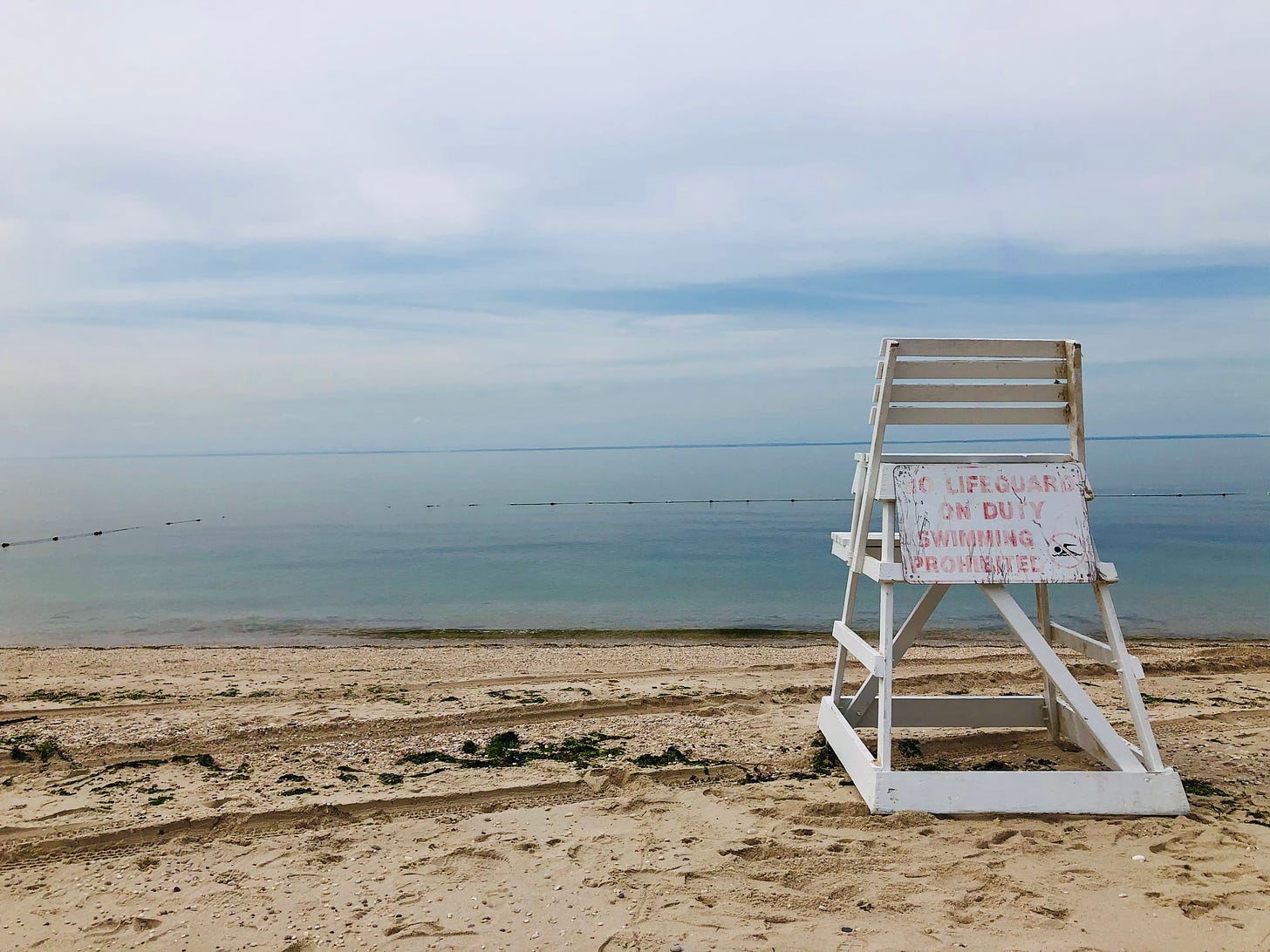
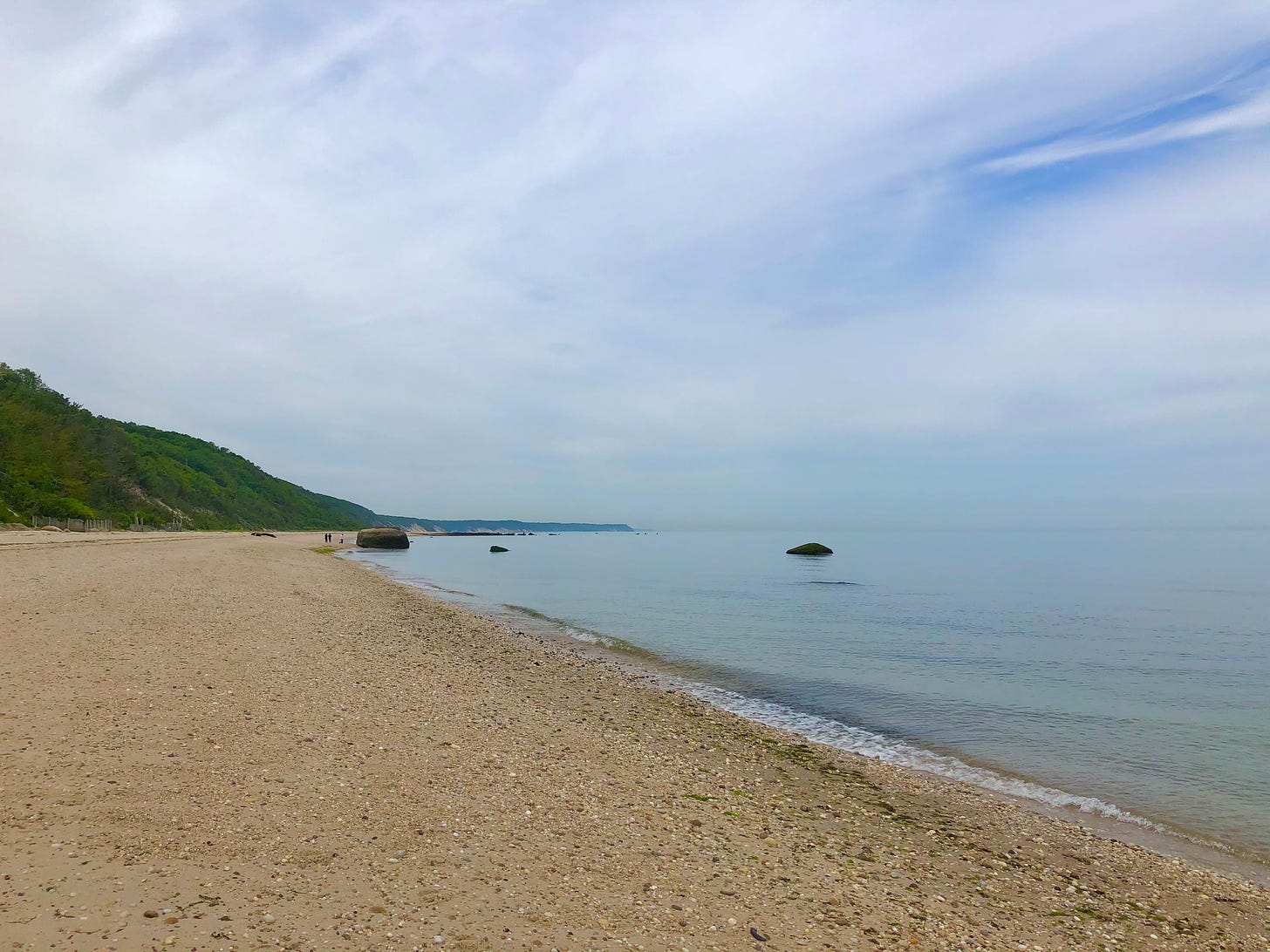

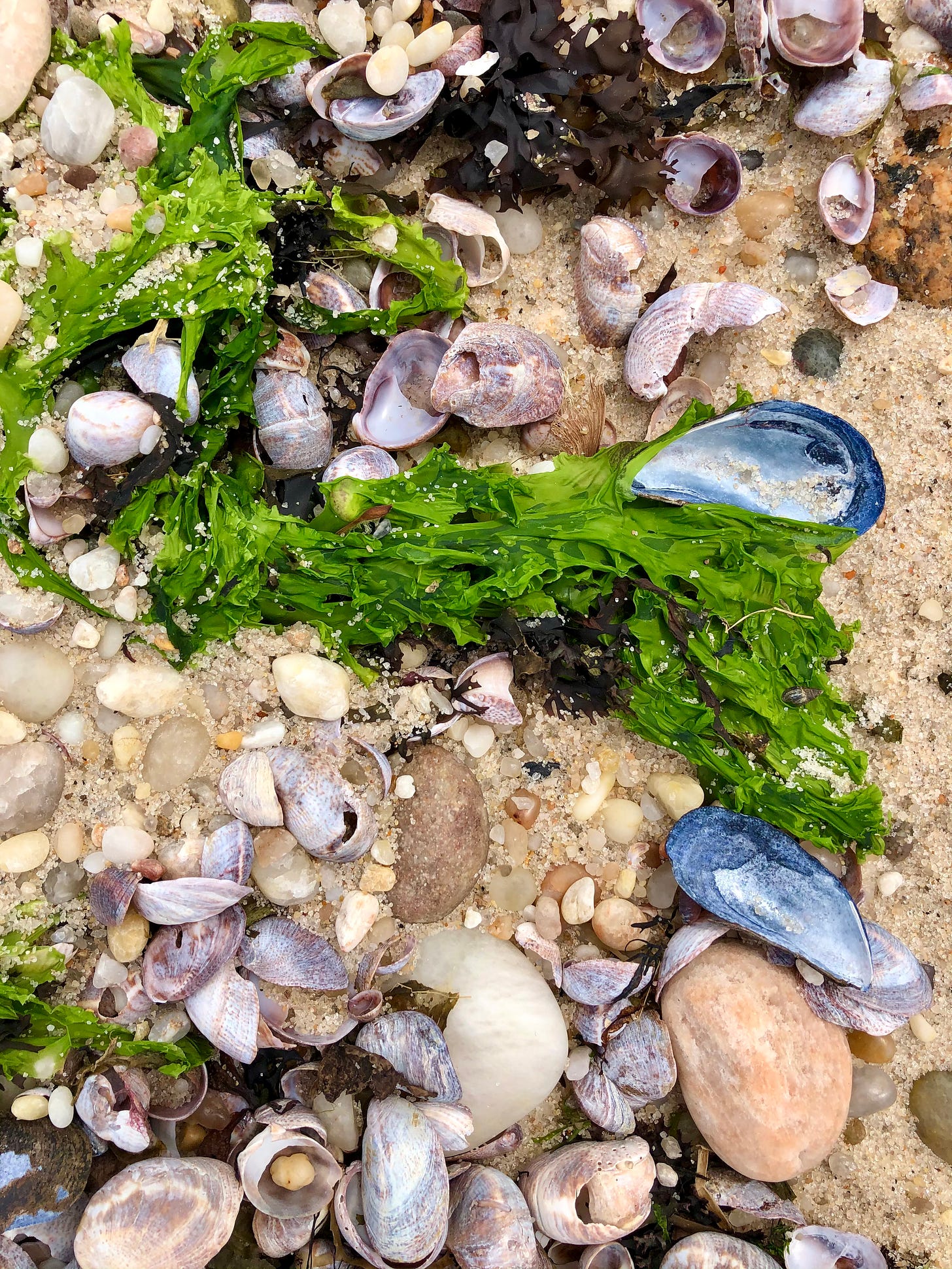
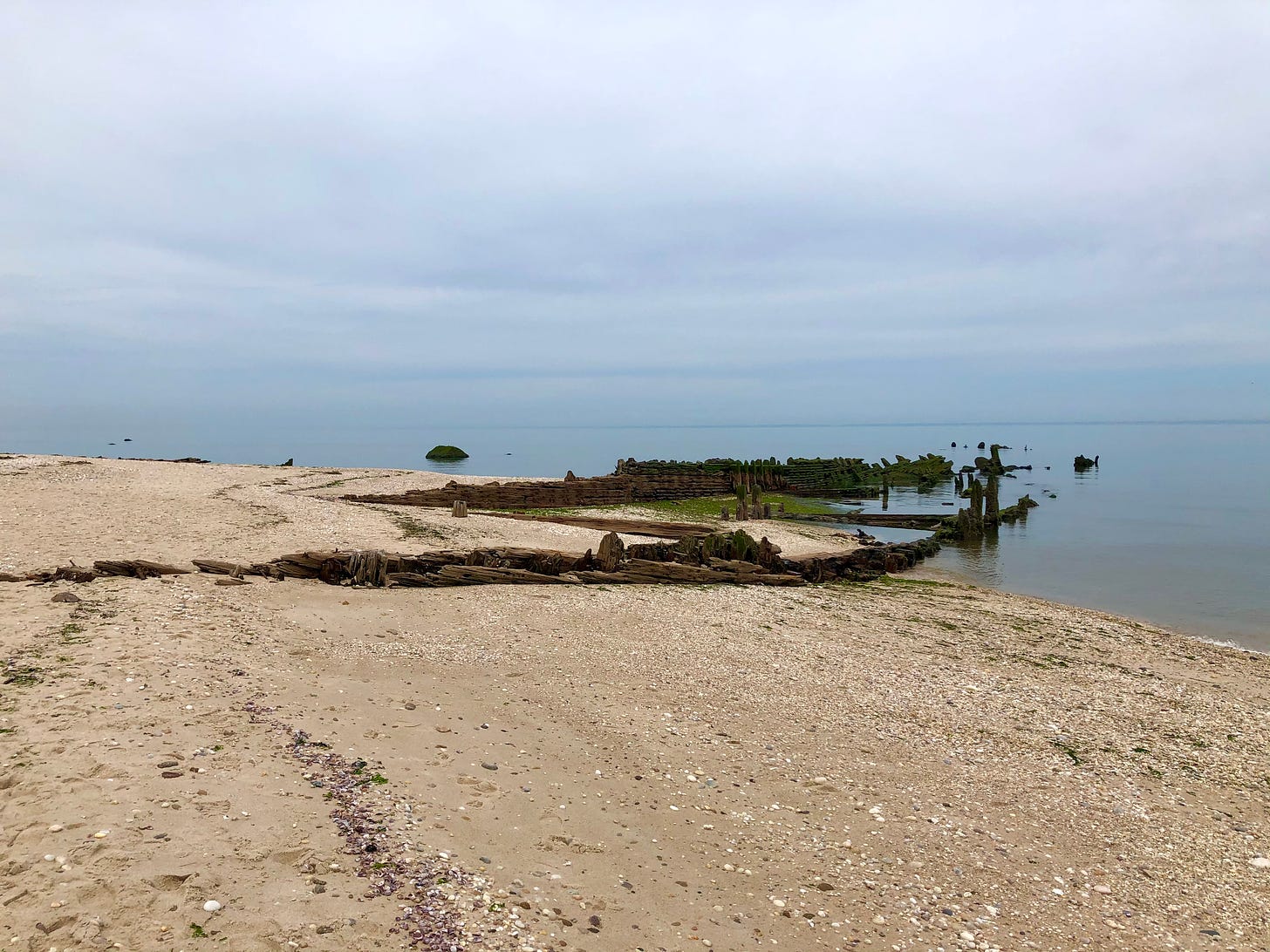
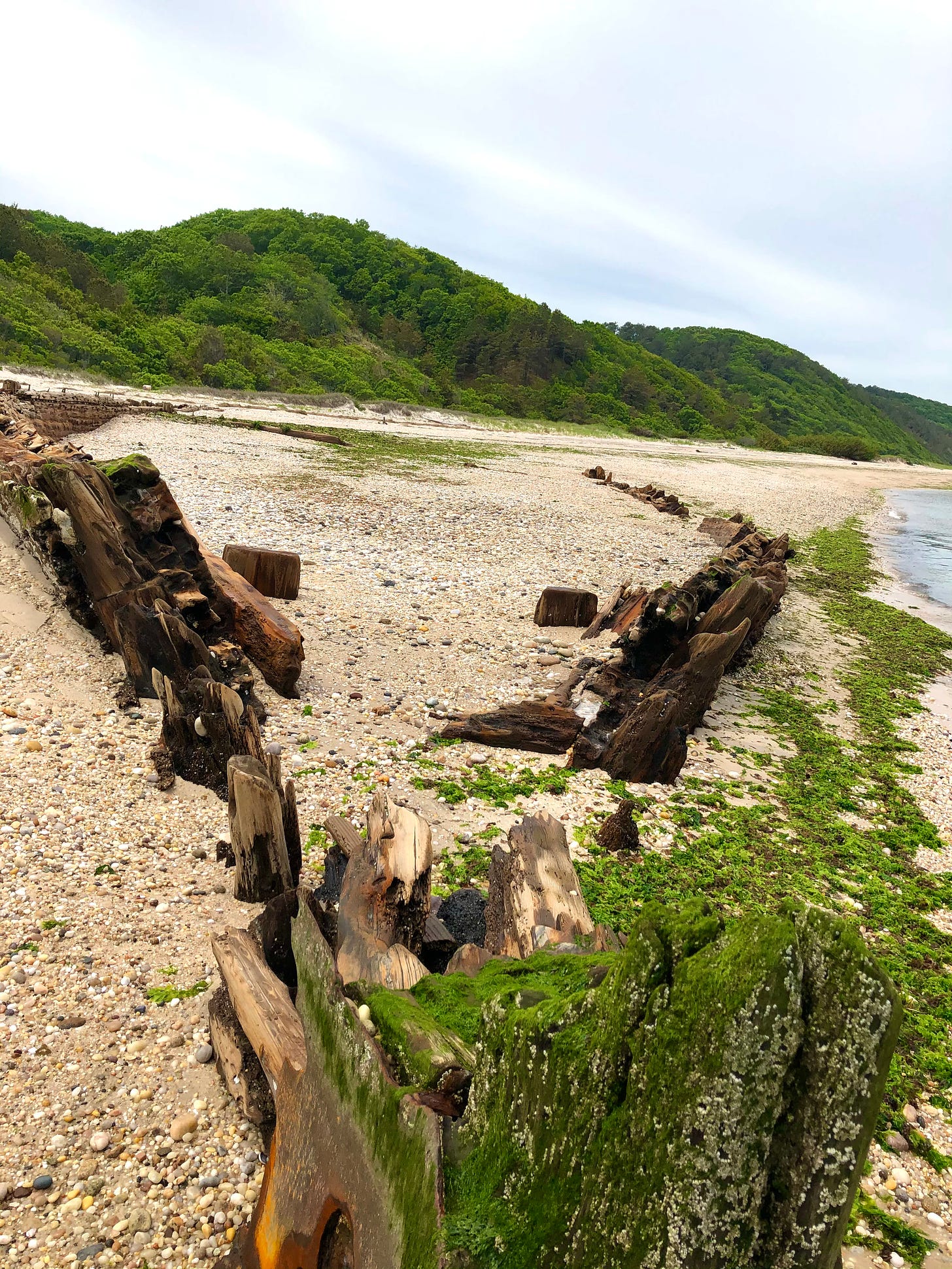
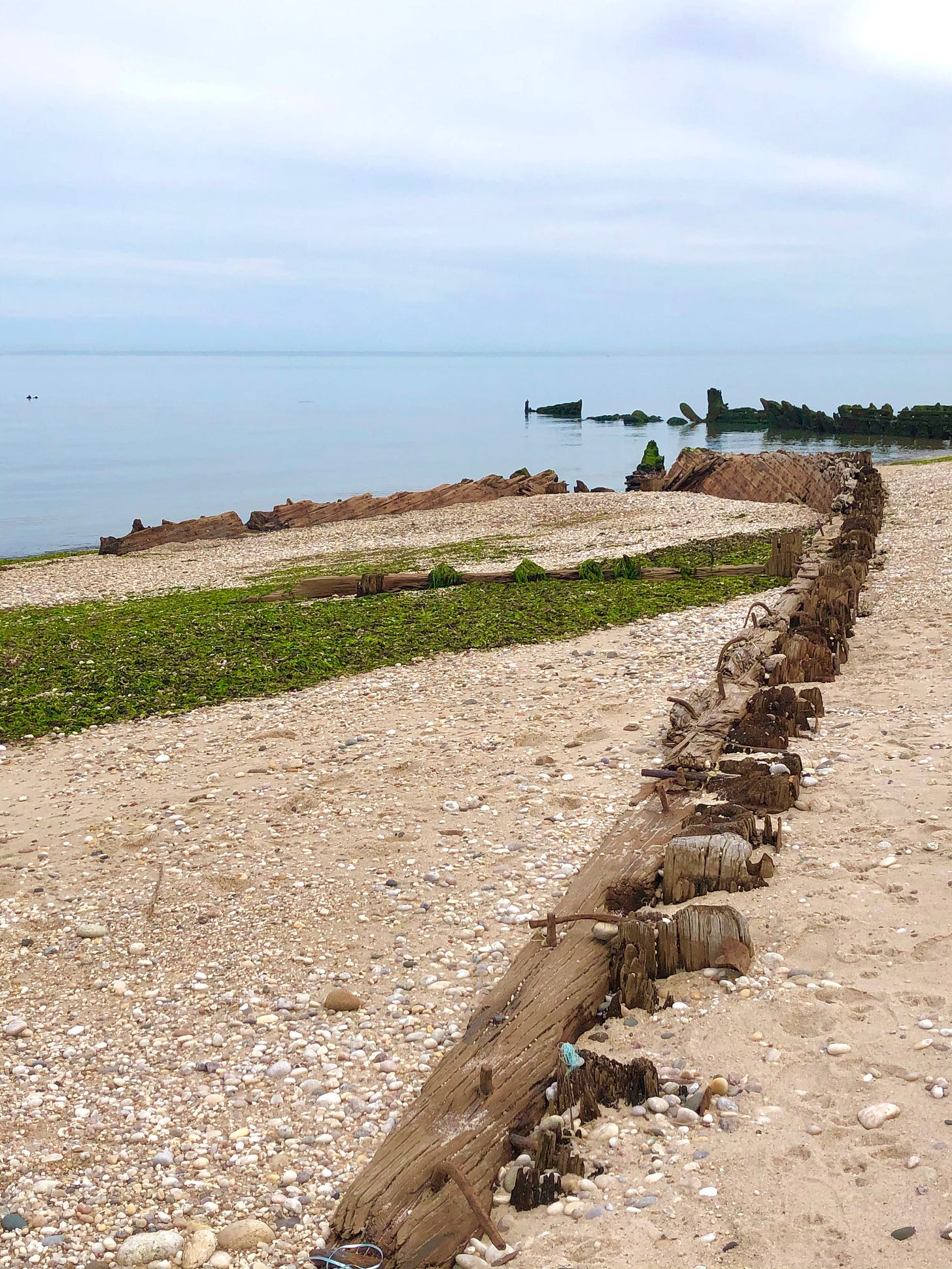
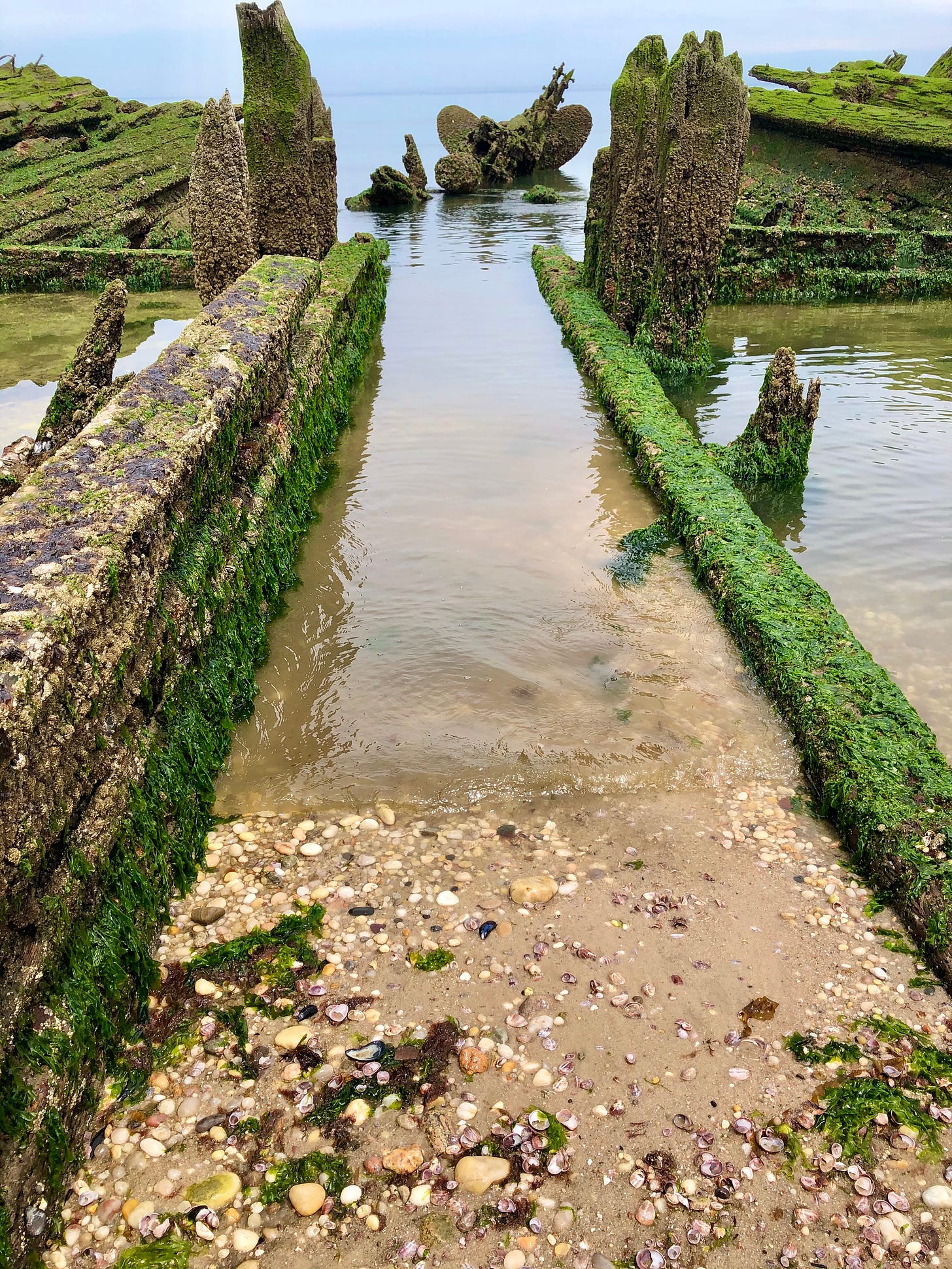
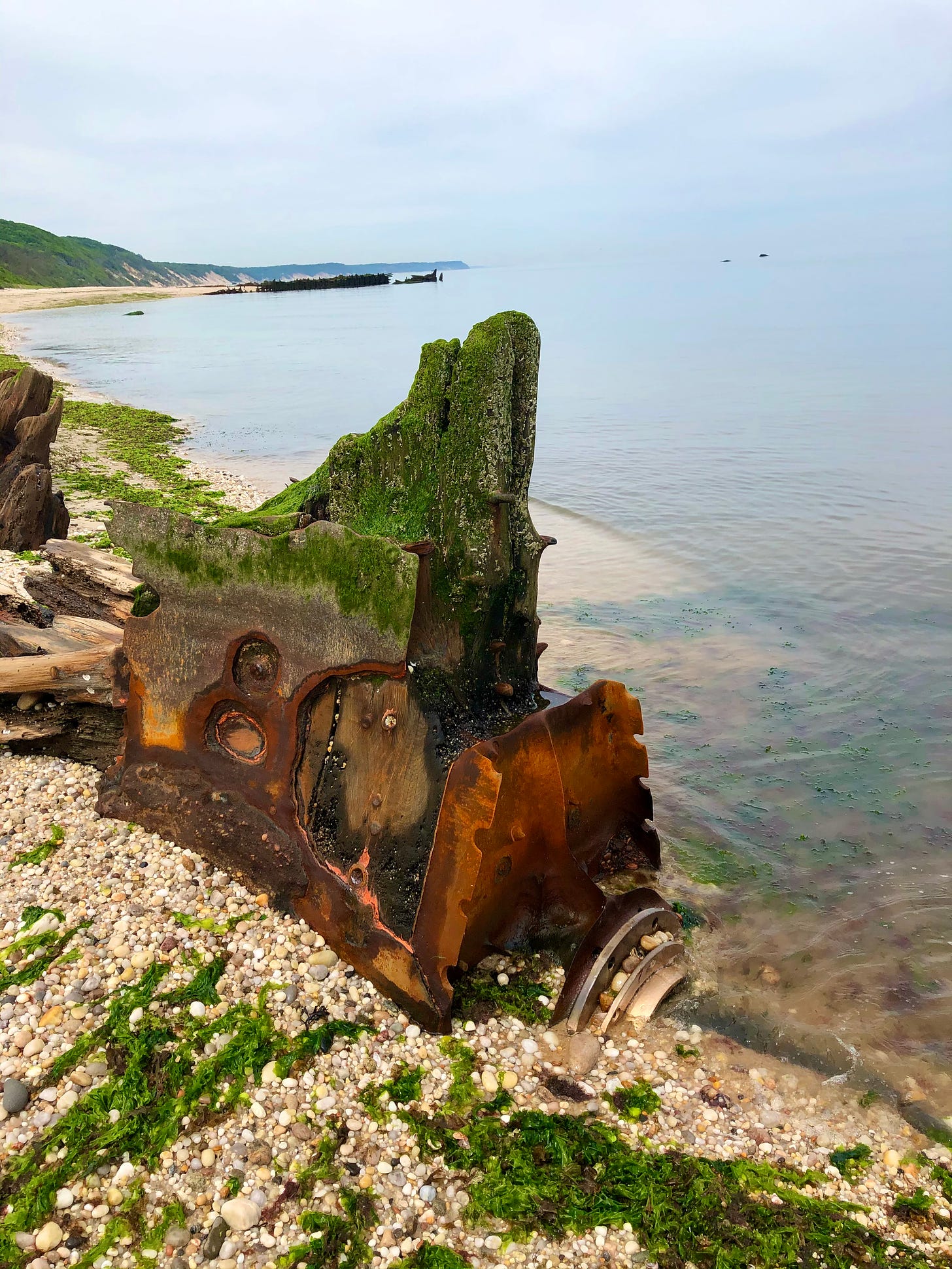
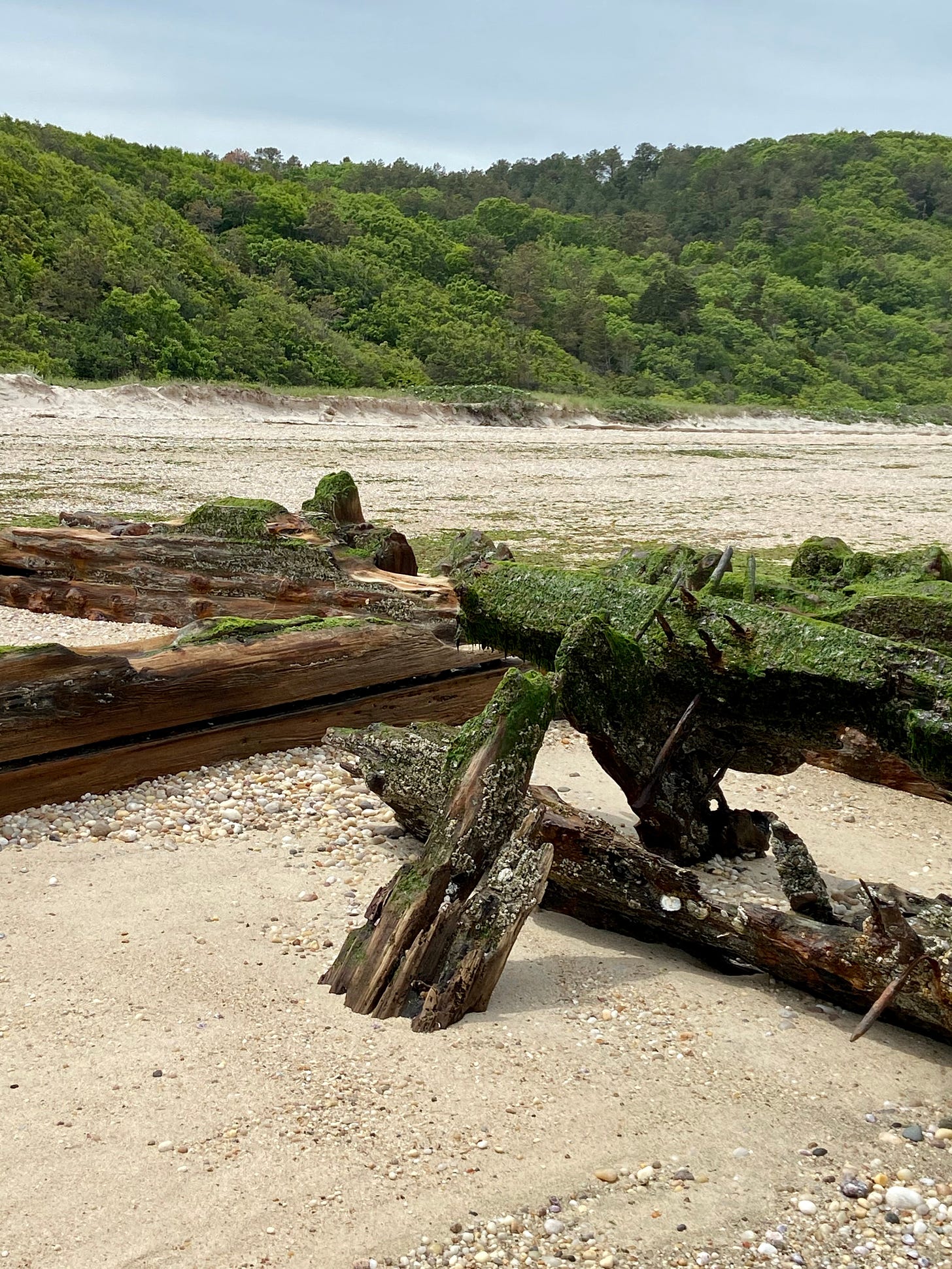
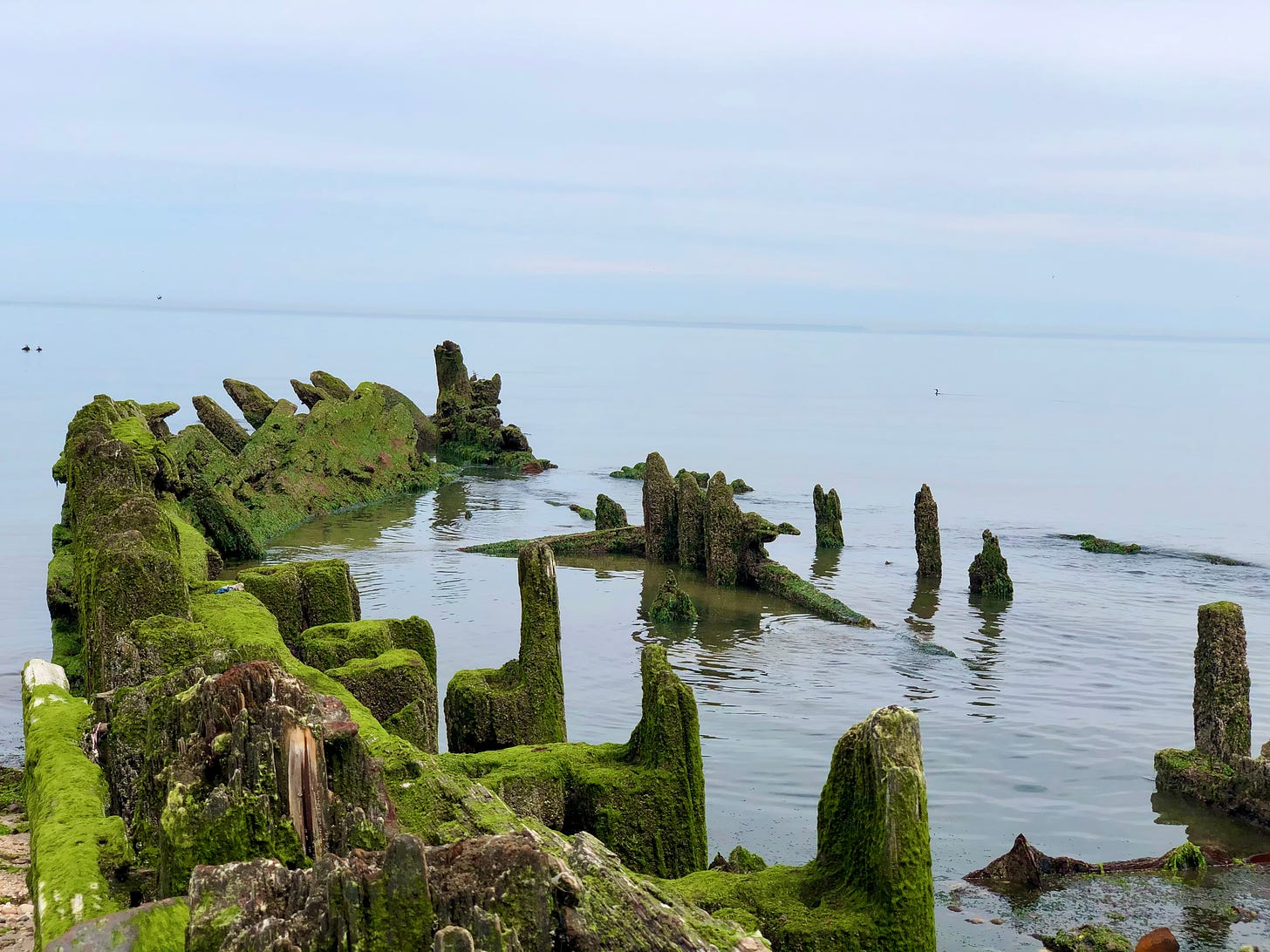
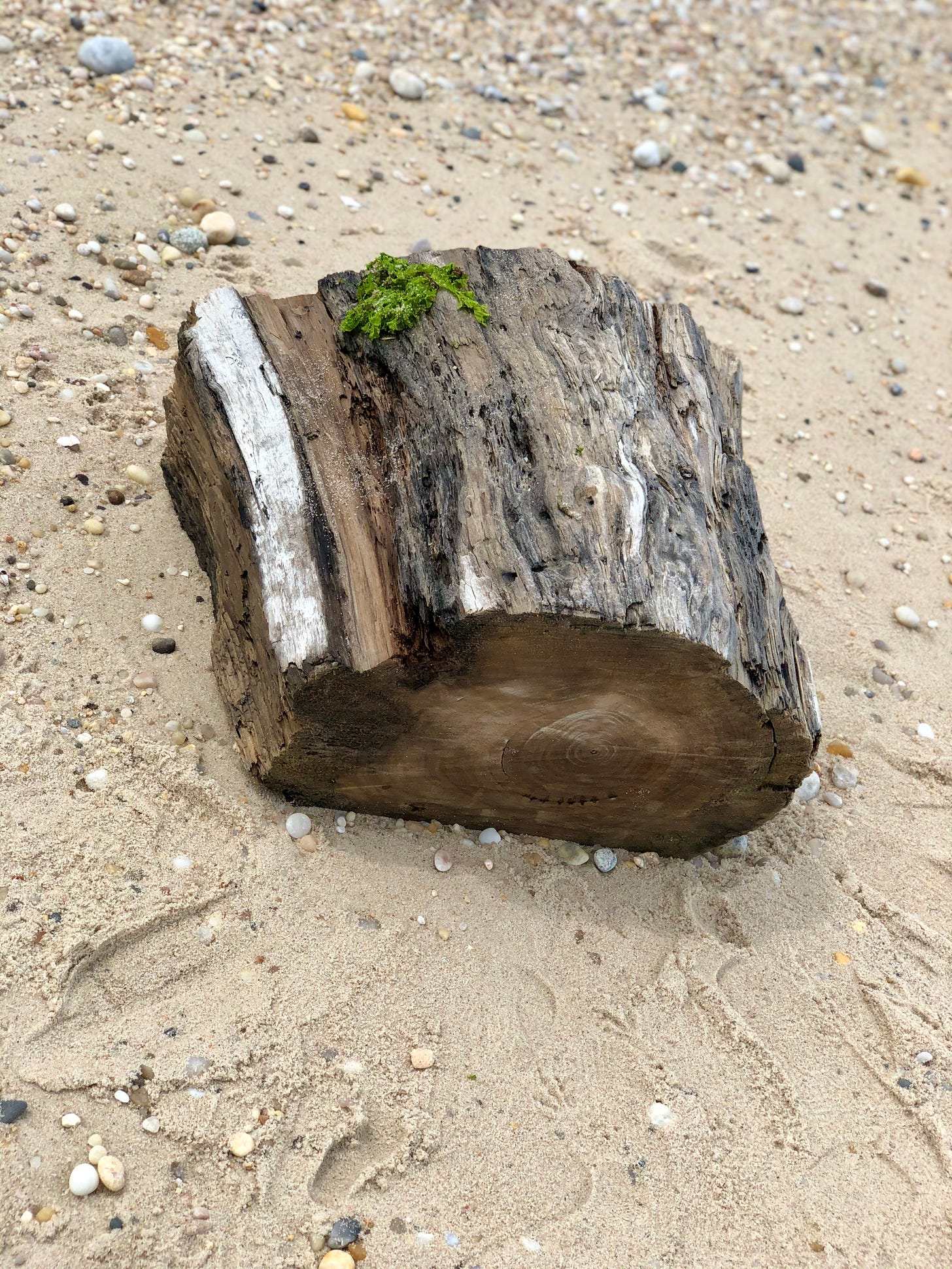
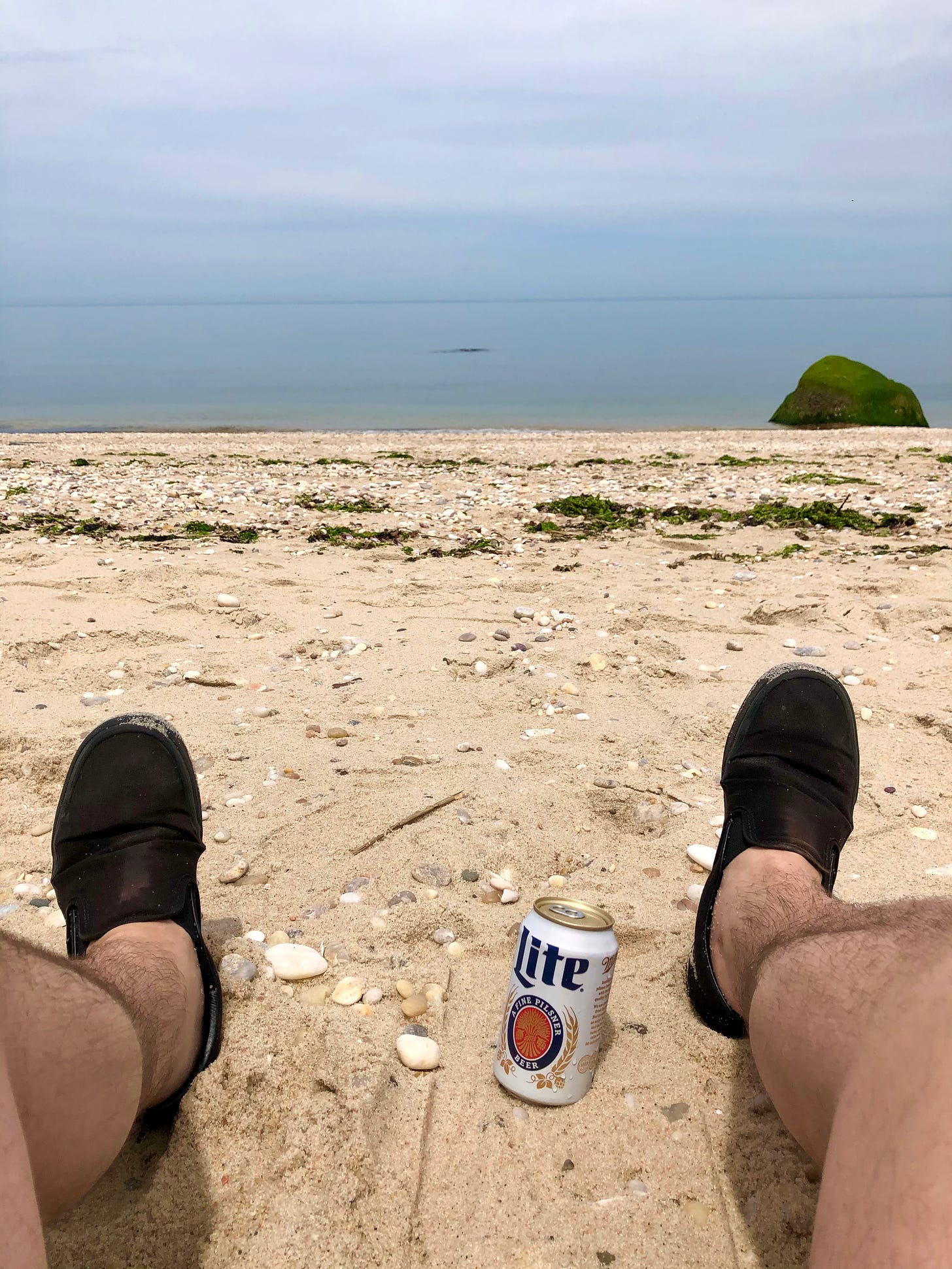
My favorite Walk It Off yet! But I’m a sucker for islands and shipwrecks. I lived on the Oregon coast for a couple of years and “wreckage” is a good word to describe my life at that moment. Too many accumulated bad decisions and a few more made while I was there. The Graveyard of the Pacific was an interesting place where the Columbia River meets the ocean. A paradoxical calming and chaotic energy. I definitely still make bad decisions on occasion, but I think when I moved away from the coast I left behind my belief that I deserved these bad choices. I left behind the wreckage of a previous life.
I subscribed: You got me with the “creamy cherry pie.” As for the wreckage in my life, maybe there’s still time for barnacles and seaweed to soften the edges and inspire artistic photos.